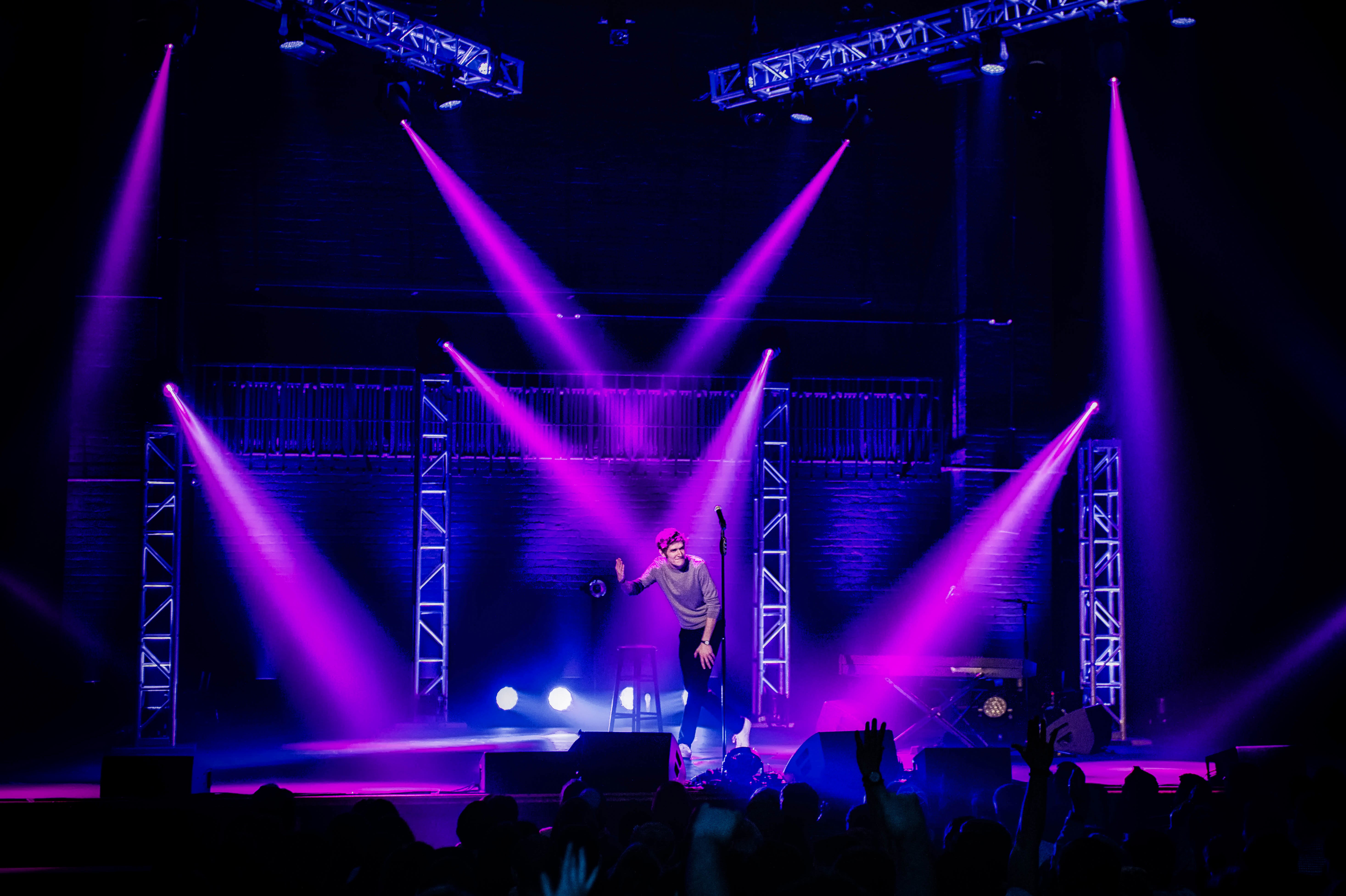Home, alone: How Bo Burnham made a masterpiece during a pandemic
Filmed completely solo over the course of 2020, Inside is both a return to comedy for the prodigious performer and also a heartbreaking evocation of the despair of social media and the pandemic. It’s an essential watch, according to Isobel Lewis


Your support helps us to tell the story
From reproductive rights to climate change to Big Tech, The Independent is on the ground when the story is developing. Whether it's investigating the financials of Elon Musk's pro-Trump PAC or producing our latest documentary, 'The A Word', which shines a light on the American women fighting for reproductive rights, we know how important it is to parse out the facts from the messaging.
At such a critical moment in US history, we need reporters on the ground. Your donation allows us to keep sending journalists to speak to both sides of the story.
The Independent is trusted by Americans across the entire political spectrum. And unlike many other quality news outlets, we choose not to lock Americans out of our reporting and analysis with paywalls. We believe quality journalism should be available to everyone, paid for by those who can afford it.
Your support makes all the difference.Bo Burnham was 16 years old when he posted his first comedy song on YouTube in 2006. In the years since, the comic has toured the world, won awards and written a critically acclaimed film. Just five years after saying he would be taking a long break from comedy, he has returned with a new Netflix special, Inside, capturing the struggles of mid-pandemic life as a performer. His audience, who have grown up alongside him, are struggling with the same problems.
From the outside, it seems like audiences wouldn’t necessarily be able to relate to Burnham’s experiences. His comedy, like Hannah Gadsby’s critically acclaimed special Nanette, is largely about comedy itself and focuses on his complex relationship with his audience, both in person and online. But as Burnham points out in 2016 Netflix special, Make Happy: “Social media is just the market’s answer to a generation that demanded to perform, so the market said, ‘Here, perform everything to each other all the time for no reason’.” Now, these words feel more relevant than ever. During the pandemic, we’ve all become comedians, trying to keep each other entertained to distract from feelings of impending doom.
His latest special, Inside, is similarly niche. Where other comics have played to socially distanced audiences or empty auditoriums over the past year, Burnham instead created the special entirely alone within an empty apartment. Every element has been set up, directed and shot by him in a singular room, cameras, lights and monitors shown littering his home. The finished project is nothing short of a masterpiece. Its surreal tone captures the collective emotions of the last 15 months, with every visually stimulating new monologue, song or sketch leaving you with a sense of claustrophobia reminiscent of being trapped, well, inside. It is also laugh-out-loud funny and desperately sad, as the comedian details his battles with depression, both during the pandemic and beyond.
To see Burnham really play with the digital presentation of his work is fascinating. He’s never felt like a performer constrained by the limits of the physical stage. His previous Netflix specials, 2013’s what. and Make Happy (which turns five today) rely on meticulously planned lighting and sound cues, leaving little room for improvisation that serves as a deliberate layer separating him from the audience. In the opening minutes of what., Burnham “accidentally” knocks a water bottle off a stool and apologises picking it up, only for a backing track to blast: “He meant to knock the water over / But you all thought it was an accident” while declaring that “art is a lie, nothing is real”.
But while live performance may not appear to inhibit him creatively, it certainly does emotionally. Burnham’s break from comedy came after suffering panic attacks on stage while touring Make Happy, calling the experience “the roughest time in my life” in a 2018 interview with Time. As the show largely explored his uncomfortable dependence on the audience for validation, it felt like a fitting place to bow out. In the time since, he’s focused elsewhere, writing and directing the 2018 coming-of-age drama Eighth Grade and starring opposite Carey Mulligan in Promising Young Woman, with more acting work in the pipeline. The news of Inside’s release shocked fans, who thought they may never see him perform live comedy again.
Watching Inside (which was filmed throughout 2020) it’s hard to imagine it ever existing in a live form. For the first time since his YouTube days, the show is a digital-only object delivered straight to the Netflix viewer without a live audience or film crew having seen it in the flesh. This has two effects: it is a visually incredible work, yet also honest to upsetting levels. We watch Burnham split into extremes. The show is the most stylised his comedy has been in years, feeling reminiscent of his early music videos such as “Words, Words, Words”, where you can sense the effort put into every rapidly changing shot. It’s also Burnham’s most honest work to date. He checks in throughout the special occasionally to let us know what day of filming he’s on and how he’s feeling. The answer is “not well”.

He talks about suicide and not being able to get up in the morning, as well as living in fear of giving your loved ones coronavirus and killing them. In one incredibly raw moment, he breaks down in guttural sobs, only for the music to swell around him and the camera to slowly move forward. The more he opens up, the more heightened the artifice – a method of coping that anyone who has written a “jokey” tweet about despair will recognise.
While I watch this heartbreaking scene play out on screen, one line from Make Happy sticks in my mind. Following another improvised-but-not-really bit, Burnham blurts out: “I’m not honest for a second up here.” The crowd doesn’t really laugh. And then he relaxes. “Honesty is for the birds, baby.” When Burnham cries on screen, loses his cool or stammers, a voice in the back of my mind questions whether we’re watching unscripted emotion or something meticulously planned. In many ways, it feels like both, or his way of using one to express the other.

“So, uh, my current mental health is, is rapidly approaching an ATL [all time low],” Burnham tells us in one scene, leg twitching as he sits hunched shirtless over a microphone. “When I’m asleep, I feel alright, but it’s basically from the moment I wake up, I just get this” – the shot changes and he begins singing – “feeling in my body, way down deep inside me / I try not to fight it”. Rainbow disco lights circle his head as he describes in a jaunty pop song about feeling like he’s “going to die”. As with social media, joking about trauma is often the easiest way of being vulnerable.
While most of us probably didn’t lock ourselves in a room alone to film a musical Netflix special over the past year, it’s striking how relatable Burnham’s humour and pain is. But even while performing on stage, audiences have flocked to him because they recognise themselves in him. We’ve grown up on the internet alongside him and have spent the past year constructing our own mini Insides on Instagram Stories, trying to entertain each other at one of the most bizarre times in history. The more niche Burnham’s experiences (and let’s be honest, Inside is about as niche as it gets) and the more bizarre the visual language he uses, the more we recognise ourselves in him.
Inside is streaming on Netflix now.



Join our commenting forum
Join thought-provoking conversations, follow other Independent readers and see their replies
Comments